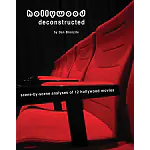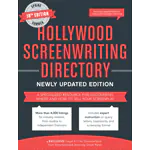Welcome to our Blog
The Power of the Flashback
Flashback can be a clever device or it can be an annoying one. If you use it sparingly and don't rely on it too heavily to tell your story…
Remember the Golden “Rule of Three” for Writing
I know some of you writers out there – yes, you know who you are -- don’t like rules and formulas and are ruthlessly resistant to following any kind…
Mac App Store Promo: Script It! for only $29.99 and FREE Ebook!
Get Script It! screenwriting app for only $29.99 for one week only and as a special bonus, get the Movie Outline eBook (worth $20) FREE if you register your…
Vary your Movie Script Locations
In your everyday life, do you sit in one spot and talk to everybody you meet in that same place? Okay, maybe you do but unless that’s the point…
Getting into a routine can help with screenwriting
You might be desperate to get your screenwriting ideas noted down and formed into a completed work. After all, if you are successful, you may reap considerable rewards both…
Conflict is the Key to Writing a Good Story
Nothing in life is easy, so why should “movie life” be any different? Whether you are writing a drama based on true life events or a science fiction movie…
Stick to your strengths when screenplay writing
If you want to make it big in the world of professional screenwriting, you are by no means alone. Whether you are a student of creative writing or a…
Formatting is crucial in screenplay writing
When you sit down to create a screenplay, there are many issues you have to bear in mind. Indeed, the process can be daunting. But as long as you…
Budding Writers Can Realize Their Dreams with the Right Tools
Everyone has dreams, but few ever get to realize them. When it comes to screenwriting, not everyone can put a script together that will be picked up by Hollywood,…
Getting a Movie Script Noticed isn’t Impossible
So many people find themselves stuck in unsuitable jobs. They sit behind desks in grey, soulless office blocks, churning out countless dull reports, when what they'd really like to…



